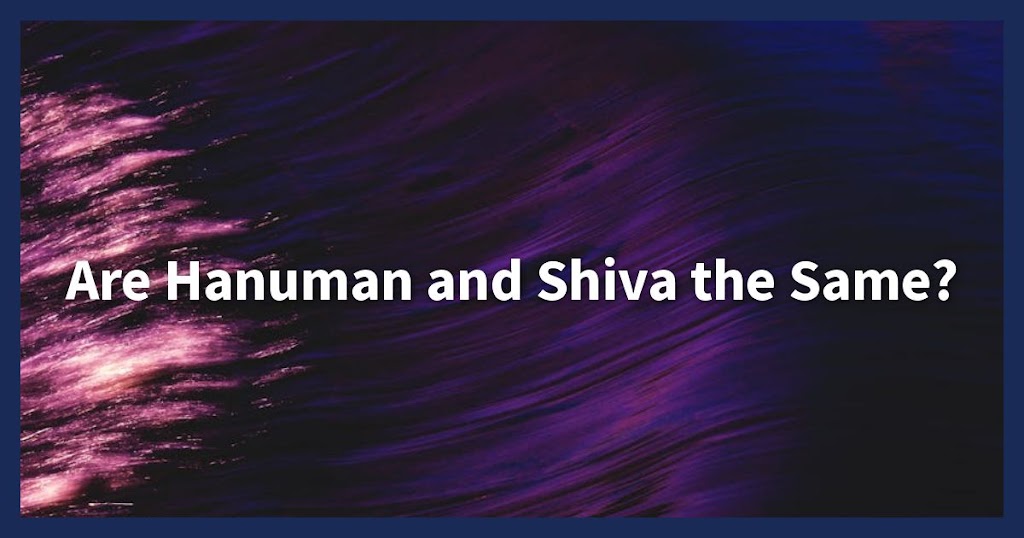The mystical legends of Hindu mythology captivate the imaginations of millions. Among the pantheon of deities, Hanuman and Shiva hold revered positions. But is there a connection between them? Are they the same, or do they serve unique purposes within the cosmic order? Let’s unravel these questions.
Understanding Hanuman
Hanuman, the monkey god, symbolizes unwavering loyalty and immense strength. A pivotal character in the epic Ramayana, Hanuman is cherished for his devotion to Lord Rama and his heroic efforts to rescue Sita from the demon king Ravana.
Hanuman’s Birth and Parentage
Hanuman’s birth is steeped in magic and wonder. Born to Anjana and Kesari, his divine parentage is attributed to Lord Shiva himself. Legend has it that Anjana, a celestial nymph, was cursed to take a monkey form, and her redemption came with the birth of Hanuman. It was Vayu, the wind god, who blessed him with extraordinary powers and strength, setting the stage for Hanuman’s legendary role.
Attributes and Powers of Hanuman
Celebrated for his devotion, Hanuman embodies selflessness and courage. His feats include flying across oceans and moving mountains, earning him adoration not just as a devotee of Rama but as a symbol of inner strength. Hanuman is believed to protect those in need, invoking his name for protection and success.
For a deeper understanding of Hanuman’s significance in Hindu traditions, consider exploring more about his stories and symbolism.
Understanding Shiva
Shiva, the destroyer among the Trimurti, plays an equally profound role in Hinduism. As a complex deity, Shiva embodies both the destructive force of time and the restorative power of creation.
Shiva’s Nature and Forms
Known for his different forms, such as Rudra, the ferocious, and Nataraja, the cosmic dancer, Shiva’s manifestations illustrate his multifaceted nature. Rudra represents destruction, while Nataraja symbolizes the eternal cycle of creation and destruction, capturing the essence of life itself.
Shiva’s Role in the Trimurti
Within the sacred Trimurti, Shiva complements Brahma, the creator, and Vishnu, the preserver. This triad underscores the core processes of the universe: creation, preservation, and destruction. Shiva’s influence reminds followers of the transient nature of existence, advocating for inner detachment and spiritual wisdom.
Comparative Analysis: Hanuman and Shiva
With distinct roles, Hanuman and Shiva offer unique teachings. However, there exists a compelling narrative bridge linking them, intriguing devotees and scholars alike.
Mythological Connections
Certain texts suggest Hanuman as an incarnation of Shiva, connecting the two through divine purposes. The stories reveal how Shiva initially incarnated as Hanuman to assist Lord Rama, uniting their destinies in devotion and duty. These narratives infuse profound depth into their worship, showcasing a mystical harmony between devotion and divine responsibility.
Explore this fascinating conversation on their connection for further insight into their intertwined legends.
Devotional Aspects
For devotees, worship of Hanuman and Shiva involves different yet interconnected experiences. Hanuman’s ardent devotees emphasize devotion and service, while Shiva’s followers focus on introspection and understanding of cosmic rhythms. This duality makes their worship rewarding, offering layers of spiritual guidance.
Reading about Shiva’s devotional significance can help one dive deeper into this philosophical exploration.
Conclusion: Are Hanuman and Shiva the Same?
In essence, Hanuman and Shiva portray distinct yet harmonious roles within Hindu mythology. Through shared narratives, they teach values of devotion, power, and wisdom, each encapsulated in their divine forms. While they are not exactly the same, their stories remind us of our intertwined fates and shared spiritual journeys, reflecting the cosmic dance of the universe.




